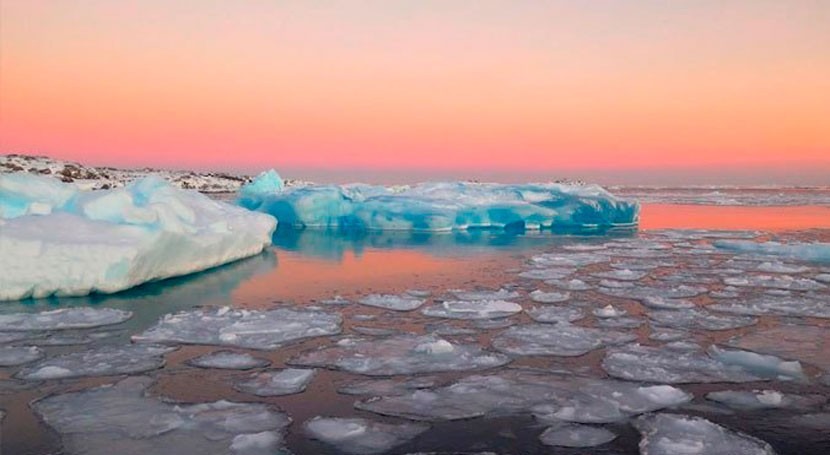International researchers, including those at the School of Ocean and Earth Science and Technology (SOEST) at the University of Hawaiʻi at Mānoa, have quantified for the first time that icebergs breaking off from ice shelves in the Antarctic can weaken and delay the effects of global warming in the Southern Hemisphere.
“Our results demonstrate that the effect of Antarctic melting and icebergs need to be included in computer model simulations of future climate change,” said Fabian Schloesser, SOEST researcher and lead author of the study. “Climate models currently used in the sixth climate change assessment of the Intergovernmental Panel on Climate Change do not account for this process.”
While the impact of climate change is causing some of the shelf to break up, the icebergs floating away from the continent may actually help slow down warming in the Southern Hemisphere.
Added Axel Timmermann, corresponding author of the study and director of the Institute for Basic Science (IBS) Center for Climate Physics in South Korea, “Our research highlights the role of icebergs in global climate change and sea level rise. Depending on how quickly the West Antarctic ice sheet disintegrates, the iceberg effect can delay the effects of global warming in cities such as Buenos Aires and Cape Town by 10–50 years.”

An iceberg floats off the Antarctic Peninsula in calm waters. (Photo credit: Jeffrey Kietzmann, National Science Foundation)
Computer simulations reveal cooling effects
The research team ran a series of global warming computer simulations, which included the freshwater and cooling effects of icebergs on the ocean. The size and number of icebergs released in their model mimic the gradual retreat of the Antarctic ice sheet over a period of several hundred years.
By turning on and off the “iceberg effect” in their climate model, the researchers discovered that icebergs can significantly slow down human-induced warming in the Southern Hemisphere, impacting global winds and rainfall patterns.
With projected future shrinking of the Antarctic ice sheet, scientists expect an intensification of iceberg discharge. Icebergs can persist for years and are carried by winds and currents through the Southern Ocean until they reach warmer waters and ultimately melt. The melting process cools ocean waters like ice cubes in a water glass. Furthermore, freshwater discharge from icebergs impacts currents by lowering ocean salinity. Whether this “iceberg effect” can slow down or alter future climate change in the Southern Hemisphere has remained an open question.
The research was published in Nature Climate Change. In addition to SOEST and IBS Center researchers, others involved in the study came from Penn State University and the University of Massachusetts.
The research team plans to further quantify the interplay between ice and climate and its effect on global sea level with a new computer model that they developed.











